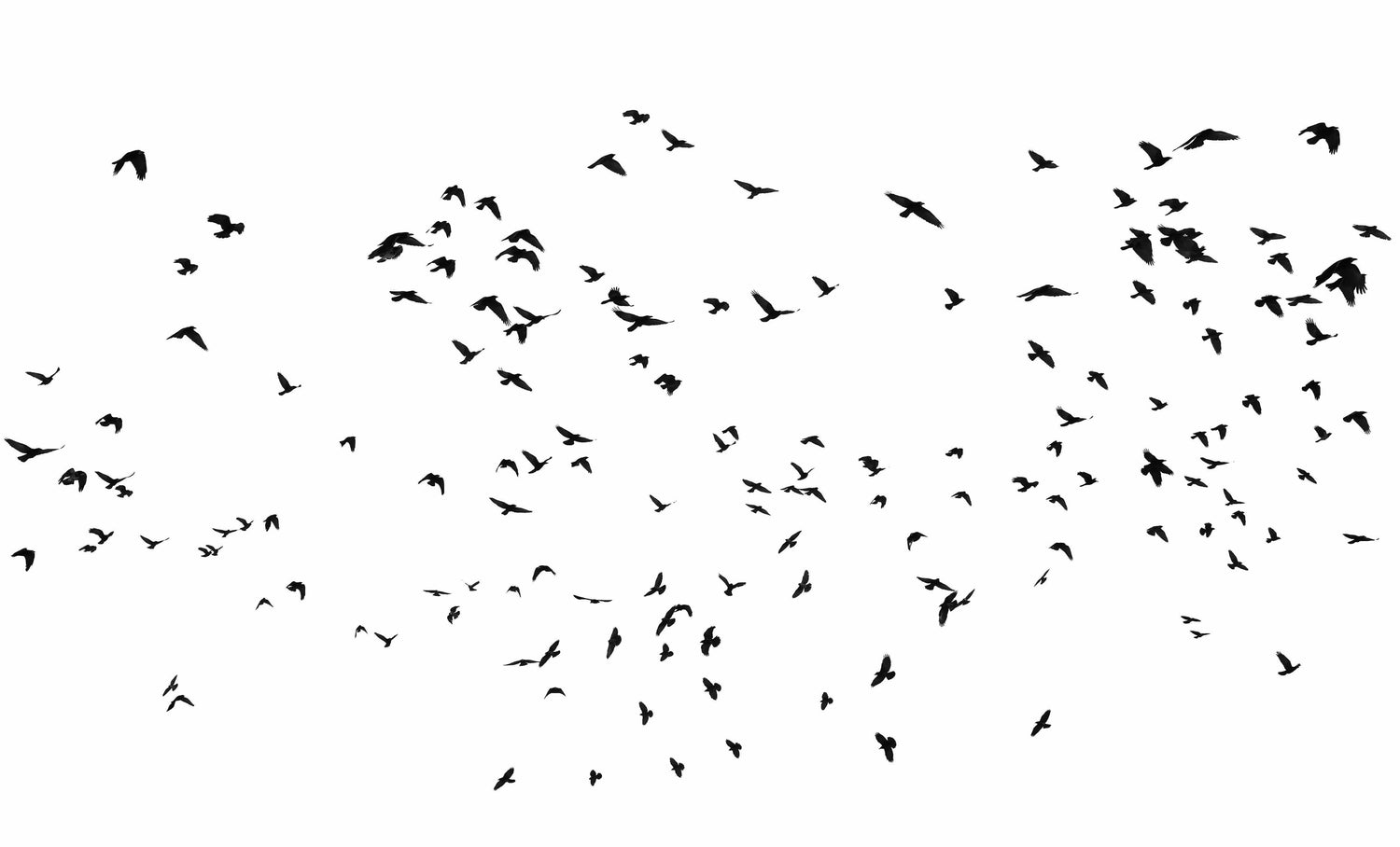Birds flying into windows are common, and it can be harmful or even deadly for the bird. It can also be a nuisance for the homeowner, as the impact can cause the window to shatter or crack.
There are several reasons why birds may fly into windows. One reason is that the reflection of the sky or trees in the window may appear to the bird as an open space, and the bird may fly towards it without realizing that there is a solid surface in the way. Another reason is that the bird may be distracted by its reflection in the window and try to attack it, thinking it is a rival bird.
There are several things you can do to prevent birds from flying into windows. One solution is to place decals or stickers on the windows to make them more visible to birds. You can also hang wind chimes or other objects near the window to create a visual distraction that will deter the birds. If the bird continues to fly into the window, you may need to move feeders and birdbaths away from the window to discourage the birds from coming too close.
If you find a bird that has flown into a window, it is essential to approach the bird carefully and gently, as it may be injured or in shock. If the bird is not injured, gently pick it up and release it outside. If the bird appears injured, it is best to contact a wildlife rehabilitation center for assistance.
How many birds die each year do to birds flying into a glass and injuring themselves
It is difficult to accurately estimate how many birds die each year from flying into the glass because it is not a phenomenon that is systematically tracked. However, it is a well-known issue that birds can be injured or killed when they collide with windows, especially when the windows are reflective or transparent, as the birds may not see the glass and fly into it. There are several ways that people can help to reduce the number of bird-window collisions, including making windows more visible to birds and installing devices that deter birds from flying into windows.
How to prevent birds from flying into windows? These six things can do to help protect birds from striking windows:
- Use window decals or stickers: These can be placed on the outside windows and help make the glass visible to birds.
- Hang wind chimes or other noise-making objects near windows: The sound can alert birds to the presence of the window.
- Close blinds or shades during the day: This can help reduce the sky's reflection and trees in the window, which can be attractive to birds.
- Use netting or screens: These can be placed outside windows to prevent birds from flying into them.
- Plant trees or bushes near windows: This can create a physical barrier that can help to deter birds from flying too close to windows.
- Move feeders away from windows: If you have bird feeders near windows, try moving them to a different location to reduce the chance of birds flying into windows.
Using one or more of these methods can help prevent birds from striking your windows and keep them safe.
We hope these suggestions help! If you have any more questions, feel free to let us know.
What is the average number of birds per year that fly into windows?
According to a study conducted by the Cornell Lab of Ornithology, the average number of birds flying into windows yearly is approximately 600 million. This number may seem high, but it is essential to consider that there are about 10 billion birds in the United States alone. Many of these birds are migratory and may fly into windows as they navigate urban environments.
Birds often fly into windows because they do not see the glass as a barrier, mainly if the window is reflective or if trees or other objects are reflected in the window. This can lead to severe injuries or death for the birds and damage to the window.
There are several things that homeowners can do to help prevent birds from flying into their windows. One option is to use window decals or stickers visible to birds. These can be placed on the outside of the window and will create a visual deterrent for the birds. Another option is to use netting or screens to cover the windows, which will physically prevent the birds from coming into contact with the glass.
It is also vital to ensure that windows are clean and free of streaks, as this can make them less reflective and more manageable for birds to see. Additionally, homeowners can avoid placing feeders or birdbaths too close to windows, as this can attract birds to the area and increase the chances of a collision.
In conclusion, the average number of birds flying into windows yearly is approximately 600 million. While this may seem like a high number, there are steps that homeowners can take to help prevent these collisions and keep both birds and windows safe.
Why do birds fly into windows?
Birds fly into windows for a variety of reasons, including:
- Reflection: Birds may mistake the reflection in the window for another bird or open-spaced and fly towards it.
- Territorial behavior: Some birds may see their reflection in the window and perceive it as an intruder, leading them to attack the reflection by flying into the window.
- Disorientation: Brightly lit windows at night may confuse birds, causing them to fly towards the light and into the window.
- Habitat loss: As urbanization increases, birds may lose their natural habitats and become more accustomed to flying around artificial structures, increasing the likelihood of flying into windows.
- Poor vision: Some birds, such as waterfowl, have poor eyesight and may not be able to see windows as an obstacle.
In general, birds fly into windows due to a combination of their natural behavior and the challenges posed by human-made structures.
What are the factors that affect birds' ability to see windows?
Birds are often attracted to windows, which can sometimes lead to collisions and injuries. The best way to help prevent bird strike accidents is to understand the factors affecting a bird's ability to see windows.
One factor that can impact a bird's ability to see windows is the reflection on the glass. When the sky or surrounding landscape is reflected on the window, it can be difficult for a bird to distinguish the window from the natural environment. This can lead to the bird flying into the window, thinking it is passing through an open space.
Another factor that can affect a bird's ability to see windows is the transparency of the glass. Some types of glass, such as double-paned windows or those with a low-emissivity coating, are less transparent and may be more difficult for a bird to see.
The size and shape of the window can also play a role in a bird's ability to see it. A small, narrow window may be easier for a bird to see and avoid than a large, expansive window.
The sun's position can also impact a bird's ability to see windows. When the sun is behind the bird or at a low angle, it can create glare on the window, making it more difficult for the bird to see.
In addition to these physical factors, the bird's behavior can affect its ability to see windows. For example, a bird distracted by food or other stimuli may be more likely to fly into a window.
To help prevent bird-window collisions, you can do a few things. One option is to apply decals or stickers to the window to make it more visible to birds. You can also place screens or netting over the windows to create a physical barrier. Closing the curtains or blinds when the sun is at a low angle can reduce glare and make the window more visible to birds.
Overall, many factors can affect a bird's ability to see windows. By understanding these factors and taking steps to make the windows more visible, you can help prevent bird-window collisions and protect our feathered friends.
Why is protecting birds a vital mission for all?
Birds are an integral part of our ecosystem and play essential roles in pollination, seed dispersal, and pest control. They also have cultural and recreational value, with birdwatching being a popular hobby. However, birds face numerous threats, including habitat loss, climate change, and pollution, which have led to declining populations of many species.
It is essential to protect birds for the following reasons:
- Ecological balance: Birds play important roles in maintaining the balance of ecosystems. They pollinate flowers, disperse seeds, and control pest populations, which are essential for the health of plants and other animals.
- Biodiversity: Birds are a diverse group of animals, with over 10,000 species worldwide. Losing bird species would lead to biodiversity loss and make our planet less rich and exciting.
- Cultural and recreational value: Birds have long been admired for their beauty and have played essential roles in literature, art, and music. Birdwatching is also a popular hobby for many people, providing opportunities for recreation and connecting with nature.
- Climate change: Birds are sensitive to environmental changes and can serve as indicators of the health of ecosystems. Protecting bird populations can help us better understand and address the impacts of climate change.
There are many ways to protect birds and their habitats, including conserving and restoring natural areas, reducing pollution, and protecting threatened and endangered species. Protecting birds ensures that these critical and beloved animals will continue to thrive and enrich our world.


